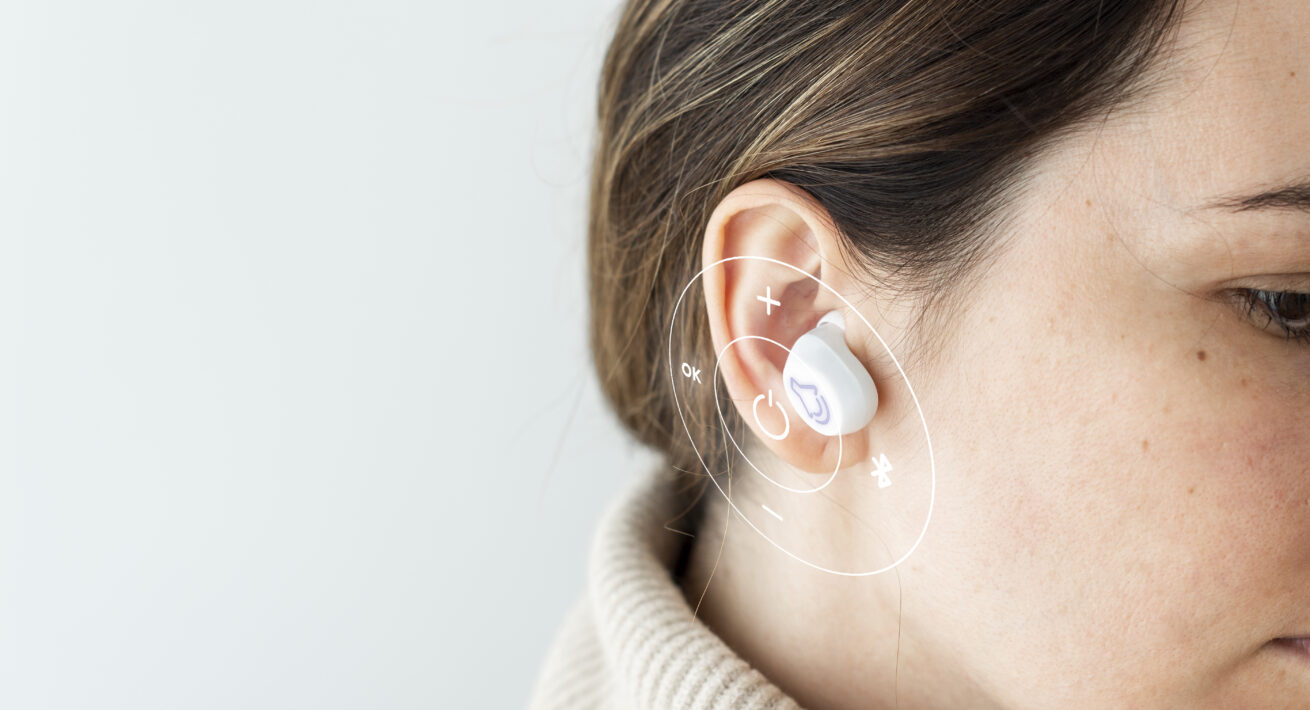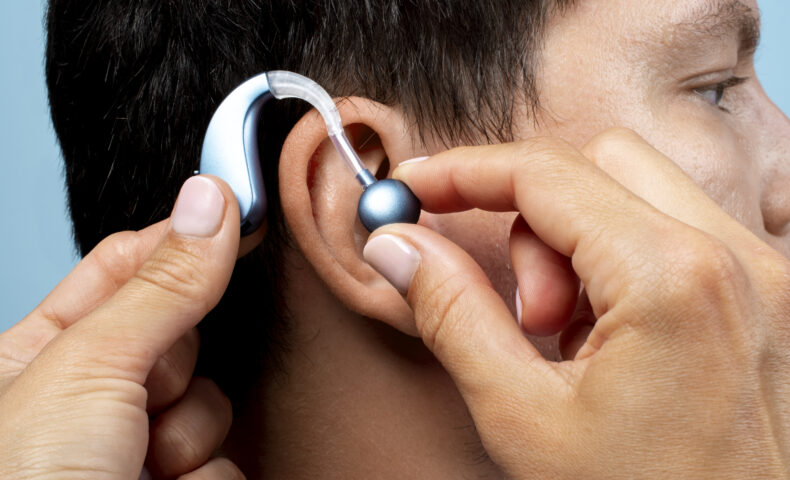Hearables, also known as hearing wearables or smart ear products, are a promising technological innovation that is opening up new perspectives in the field of hearing. These innovative devices combine the functionalities of traditional earphones with cutting-edge technologies such as biomonitoring. Find out in this article exactly what a hearable is and the challenges faced by manufacturers. But also how they can be customized to deliver an optimal hearing experience.
Hearables, wearables, what are they?
What is a wearable?
A “wearable” is an electronic device that can be worn on the body. This device is often connected to the Internet or other instruments via Bluetooth. It is designed to collect, process and deliver data on a continuous basis.
What is a hearable ?
A “hearable” is an auditory wearable. This equipment is specifically worn in or over the ears, such as earbuds, in-ear headphones or connected hearing aids.
Hearables are wearable electronic devices created to enhance users’ hearing experience. Indeed, they go beyond simple wireless headphones by integrating advanced features such as wireless connectivity, motion sensors and sound processing technologies. Some of these devices are more recently being used for medical purposes, such as biomonitoring.
What are the advantages of hearables over traditional headphones?
Hearables therefore represent a new generation of portable audio devices with innovative features. However, the design and production of these systems are not without their challenges. Let’s find out in the following paragraphs what obstacles manufacturers face? And how can these devices be adapted to deliver an optimal hearing experience?
Hearables are intelligent products worn in or over the ears.
Here is a list of their advantages over traditional earphones:
- Superior sound quality thanks to advanced sound optimization systems.
- Intelligent features such as AI (Artificial Intelligence), active noise cancellation, and more.
- Biomonitoring such as heart rate or blood sugar.
- Connectivity with other medical equipment and integration with various technologies such as health apps.
- Hearing health by modulating sound according to the user’s specific needs.
Hearables thus represent a new generation of wearable audio devices with innovative functionalities. However, the design and production of these systems are not without their challenges. Let’s find out in the following paragraphs what obstacles manufacturers face? And how can these devices be adapted to deliver an optimal hearing experience?
Hearables challenges for manufacturers
Expectations of hearables are high and diverse.
Firstly, users are looking for optimum sound quality. Manufacturers must therefore take into account factors such as clarity, fidelity and noise suppression.
Secondly, battery life is a determining factor. Consumers expect hearables to be able to operate for extended periods without the need for frequent recharging.
Thirdly, the devices are expected to be easy to handle to ensure simple, pleasant use.
Finally, as with any hearing product worn for long periods, hearables need to be ergonomic and comfortable. This is essential to ensure a pleasant, fatigue-free experience for users. That’s why it’s imperative that manufacturers are able to offer customized, even made-to-measure, hearables to suit the morphology of each ear.
To meet these challenges, today there are 2 approaches for brands producing on a large scale: offering a wide range of standard sizes, or creating custom products.
The MyFit solution meets the need for the perfect size recommendation using the most common tool already in everyone’s pocket… the smartphone. Indeed, the innovative MyFit solution enables precise measurements of each ear to be taken remotely, to offer personalization on a large scale. But how is this personalization achieved with a smartphone? We’ll find out in the next section.
How to personalize hearables with a smartphone?
How to scan an ear with 3D mobile scanning technology?
To meet the specific hearing needs of each individual, hearables are products that must be customizable. However, this adaptation requires an exact understanding of the shape and size of the individual’s ear. To achieve this, it is necessary to acquire precise measurements of the ear, and this is where mobile 3D scanning comes in.
The MyFit Solutions app offers a 100% ear-specific scanning experience, enabling the ear’s morphology to be acquired in a matter of seconds. To do this, the app positions over 60 characteristic points on the various parts of the ear (helix, concha, tragus, etc.), enabling precise, to-scale measurements to be taken. MyFit Solutions’ Artificial Intelligence algorithms then link the characteristics of each ear to the corresponding hearable. That way, the mobile application doesn’t provide raw measurements, but directly a size recommendation for the user based on his or her morphology and the corresponding hearables. Acquisition is simple and intuitive, as this video shows:
All you need to do is follow the directions given by the app to get the right size recommendation.
With the use of a mobile app on your smartphone, there’s no need to invest in an expensive scanner or use fingerprint paste. This latest-generation mobile technology makes it possible to take measurements remotely. But how exactly does this 3D scanning app work? That’s what we’ll be looking at in the next section.
How does 3D scanning technology work to personalize hearing products?
The MyFit solution is implemented in three main stages:
Choice of integration:
There are two options for integrating the MyFit solution into the size recommendation process.
The development of a customized application offering the necessary scanning experience. For example, SoundBe, a Sonova subsidiary in the United States, has worked with MyFit Solutions to recommend the right earplug size to its customers.
Integration of the SDK (Software Development Kit) into the existing customer application to add real-time product size recommendation to the purchasing process.
MyFit Solutions’ artificial intelligence algorithms operate:
Thanks to its neural network systems, about 15 measurements are matched with the hearables characteristics, leading to the relevant size recommendation (such as XS, S, M, etc.)
Size recommendation:
Thanks to MyFit Solutions technology, you can instantly recommend the right size of hearables to your customers directly on their mobile!
The benefits for users and manufacturers are unequivocal:
- Increased customer satisfaction thanks to a tailor-made offer;
- Time-saving selection and purchasing processes;
- Reduced return rates thanks to precise sizing recommendations;
- Brand enhancement by offering an innovative and unique experience.
Would you like to find out more about our 3D scanning solutions and applications for hearables? Interested in discovering how we personalize the hearing experience?



